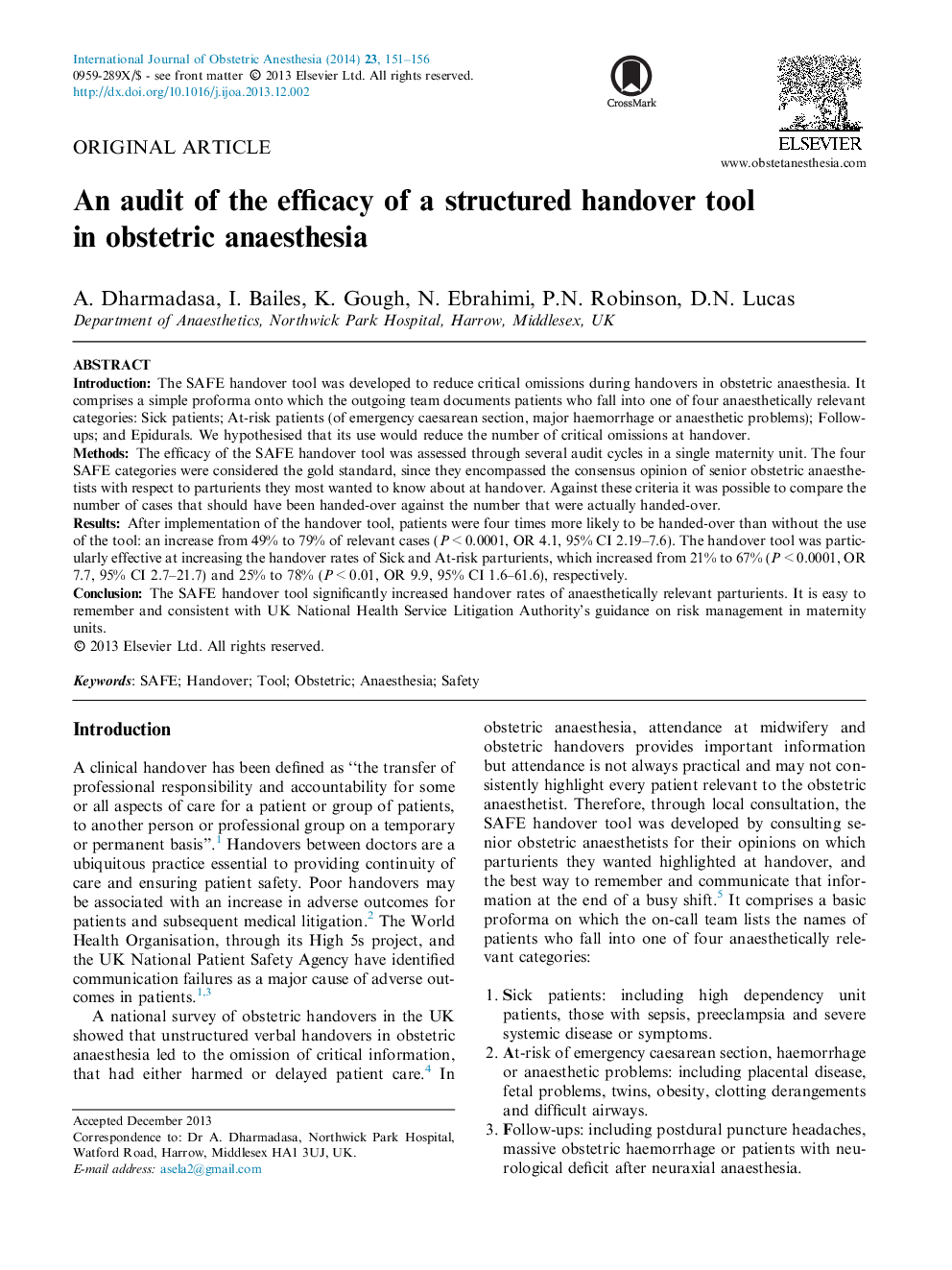| Article ID | Journal | Published Year | Pages | File Type |
|---|---|---|---|---|
| 2757500 | International Journal of Obstetric Anesthesia | 2014 | 6 Pages |
IntroductionThe SAFE handover tool was developed to reduce critical omissions during handovers in obstetric anaesthesia. It comprises a simple proforma onto which the outgoing team documents patients who fall into one of four anaesthetically relevant categories: Sick patients; At-risk patients (of emergency caesarean section, major haemorrhage or anaesthetic problems); Follow-ups; and Epidurals. We hypothesised that its use would reduce the number of critical omissions at handover.MethodsThe efficacy of the SAFE handover tool was assessed through several audit cycles in a single maternity unit. The four SAFE categories were considered the gold standard, since they encompassed the consensus opinion of senior obstetric anaesthetists with respect to parturients they most wanted to know about at handover. Against these criteria it was possible to compare the number of cases that should have been handed-over against the number that were actually handed-over.ResultsAfter implementation of the handover tool, patients were four times more likely to be handed-over than without the use of the tool: an increase from 49% to 79% of relevant cases (P < 0.0001, OR 4.1, 95% CI 2.19–7.6). The handover tool was particularly effective at increasing the handover rates of Sick and At-risk parturients, which increased from 21% to 67% (P < 0.0001, OR 7.7, 95% CI 2.7–21.7) and 25% to 78% (P < 0.01, OR 9.9, 95% CI 1.6–61.6), respectively.ConclusionThe SAFE handover tool significantly increased handover rates of anaesthetically relevant parturients. It is easy to remember and consistent with UK National Health Service Litigation Authority’s guidance on risk management in maternity units.
